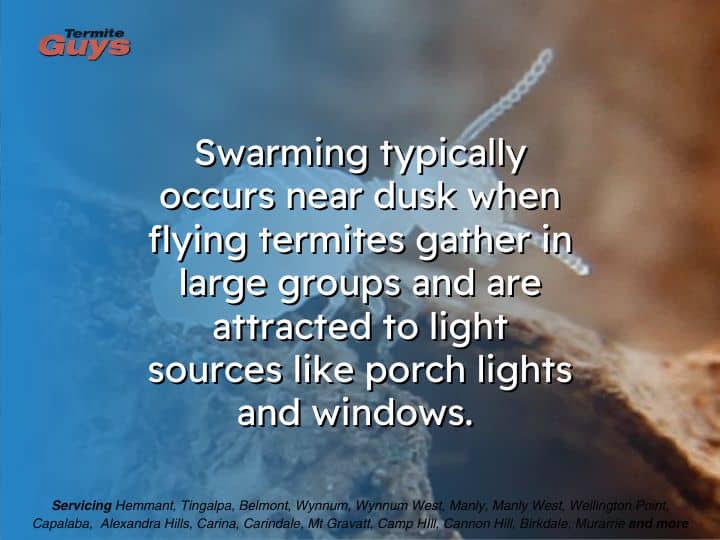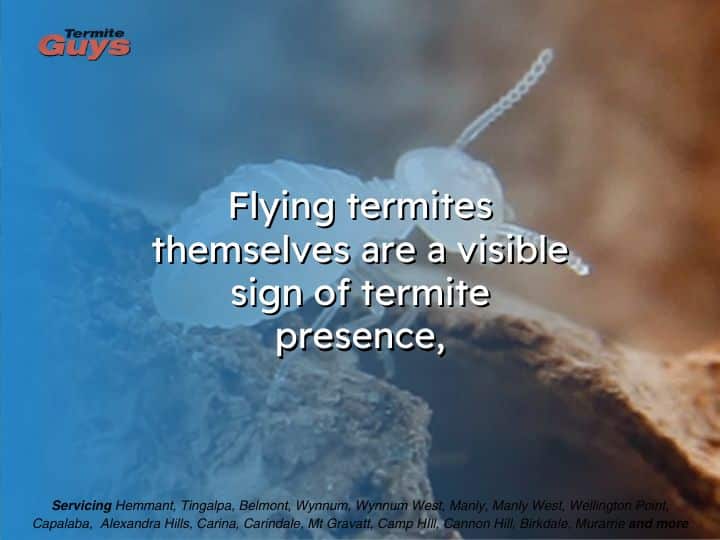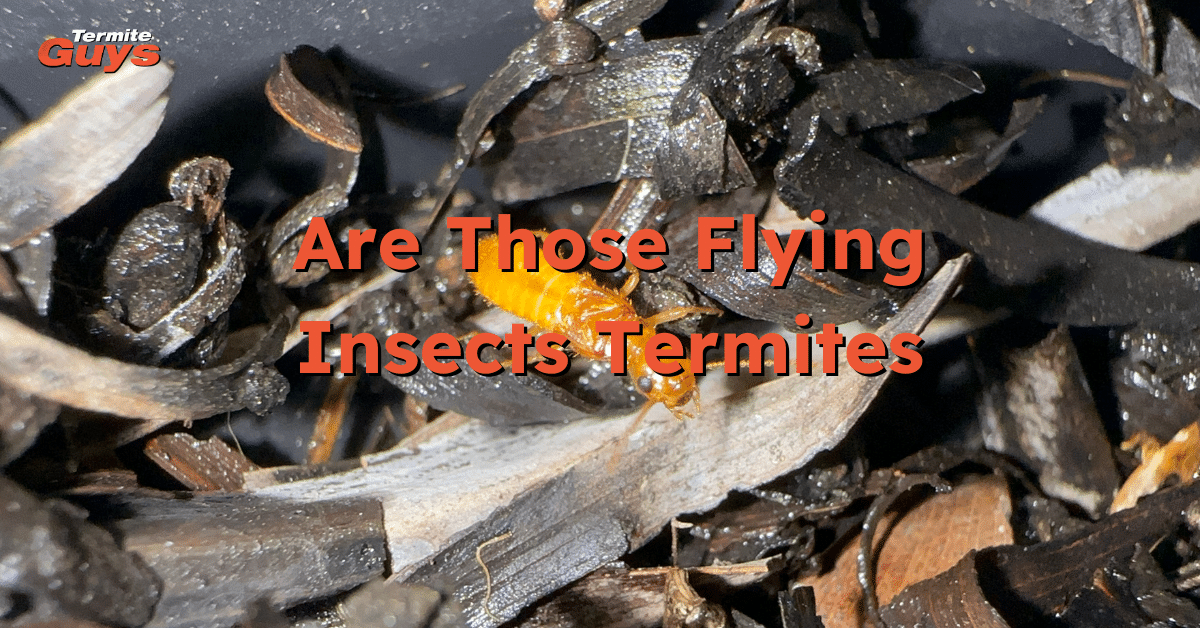Flying termites, or alates, can be an alarming sight around Brisbane homes, signaling potential termite activity nearby. Understanding who these flying insects are, their role, and how to identify them is crucial for protecting your property from costly damage.
Flying termites are reproductive members of termite colonies that emerge in swarms to mate and establish new colonies. Brisbane’s swarming season typically lasts from November to March, sometimes starting earlier during warm, humid conditions. Key signs of termite presence include the sight of flying termites themselves, piles of discarded wings near entry points, and swarms around lights at dusk.
Flying termites have two pairs of equal-length translucent wings.
Their antennae are straight and beaded.
Termites’ bodies are broad with a straight waist, unlike ants.
Recognising flying termites early helps homeowners act swiftly to arrange inspections and termite control, preventing extensive damage.
What Are Flying Termites and What Role Do They Play in a Colony?
Flying termites, scientifically known as alates, are the reproductive caste within a termite colony. Their primary role is to leave the parent colony during swarming season, find mates, shed their wings, and establish new colonies. These winged termites ensure the survival and expansion of termite populations in Brisbane’s favourable warm, humid environment.
Alates have broad bodies, straight antennae, and two sets of equal-sized wings that are longer than their bodies. Their swarming marks a mature colony capable of reproduction. While the alates themselves don’t cause damage, their presence indicates an active termite colony nearby that could threaten wooden structures.
Alates originate from colonies underground or inside wood.
Swarm to mate and start new nests elsewhere.
Dispersion helps spread the termite population.
Swarming typically occurs on warm, humid days.
Related Questions
What is the purpose of flying termites?
Flying termites are reproductive termites that swarm to mate and establish new colonies, ensuring the termite population grows.
Do flying termites damage homes?
The winged termites don’t directly cause damage, but their presence signals nearby colonies that can infest and damage wooden structures.
When Is Flying Termite Swarming Season in Brisbane?
In Brisbane, the termite swarming season usually runs from November through March, coinciding with warmer temperatures and higher humidity. Swarms may start earlier, sometimes in September or October, triggered by favourable conditions such as heavy rain and mild winds. After storms, termite activity often surges because moist soil and wood create ideal breeding grounds for these insects.
Swarming typically occurs near dusk when flying termites gather in large groups and are attracted to light sources like porch lights and windows. Their emergence is a natural part of the termite life cycle but warns homeowners of potential infestations.
Swarming peaks during warm, humid months.
Moisture after rain triggers swarms.

Swarming peaks during warm, humid months.
Moisture after rain triggers swarms.
Nights with little wind encourage swarming flights.
Lights attract flying termites near homes.
Swarms can last days or weeks depending on conditions.
Questions answered about swarming
When do flying termites swarm in Brisbane?
Flying termites swarm mainly from November to March, triggered by warm, humid weather, but swarms can start earlier.
Are flying termites seasonal in Brisbane?
Yes, they typically swarm once a year during the warmer months when environmental conditions are best for mating and dispersal.
How Can You Differentiate Flying Termites from Flying Ants?
Distinguishing flying termites from flying ants is critical because termites pose a greater risk to homes. Although both insects fly in swarms and have wings, there are clear physical differences:
Termites have straight, beaded antennae; ants have bent or elbowed antennae.
Termite wings are uniform in length and longer than their body; ants’ front wings are larger than their back wings.
Termites have a broad, straight waist; ants have a narrow, pinched waist.
Termite bodies are generally pale or dark brown, while ants may be darker and segmented.
These differences can help homeowners correctly identify the insects and take appropriate pest control action.
Termite wings are translucent and equal-sized.
Ant wings have a size difference between front and hind wings.
Body shape is cigar-like for termites, segmented for ants.
Termite antennae are straight; ant antennae are elbowed.
Termites swarm in larger, more concentrated groups.
Questions about flying ants
How do I tell flying termites from flying ants?
Flying termites have straight antennae, equal wing size, and a broad waist; flying ants have bent antennae, unequal wings, and a pinched waist.
Are flying ants a sign of termites?
Flying ants are not termites and generally less destructive, but termite presence requires different pest control measures.
What Are the Common Signs of Termite Activity Around Homes?
Flying termites themselves are a visible sign of termite presence, but other indicators can alert homeowners to potential infestations:
Piles of discarded wings near windows, doorways, or light fixtures indicate termites have shed wings after swarming.
Mud tubes or tunnels on walls or foundations serve as protected pathways for subterranean termites.
Hollow-sounding or damaged timber due to termites eating wood from the inside out.
Presence of live termites in wall cavities or wooden structures.
Dark, blistered, or cracked paint that hides termite damage underneath.

Recognising these signs early can prevent major costly repairs by prompting quick termite inspections and treatments.
Discarded wings are small, translucent, and come in piles.
Mud tubes are often pencil-thick and run along foundations.
The timber damage may be hidden until extensive.
Active termite presence can be silent and unnoticed.
Flying termites near lights or doors is an early warning.
Questions answered about common signs of termites
What do termite wings look like?
Termite wings are translucent, equal in size, and often found in piles near entry points after swarming.
What are signs of termites in a house?
Signs include discarded wings, mud tubes, hollow or damaged wood, and swarming termites near light sources.
Summary: Why Flying Termites Matter for Brisbane Homeowners
Flying termites are a critical sign that an active termite colony may be nearby. Understanding how to identify these alates and their swarming behaviour in Brisbane – typically from November to March—helps homeowners act proactively. Spotting flying termites or their discarded wings near your home means it’s time for a thorough termite inspection.
Termite Guys Brisbane is the trusted local expert for termite inspections and control. Their knowledge of Brisbane’s termite risks and expert treatment methods makes them the best choice to protect homes from costly termite damage.
Frequently Asked Questions (FAQ)
1. What attracts flying termites to Brisbane homes?
Flying termites are attracted to warm, humid conditions and light sources near homes, especially during their swarming season.
2. Can flying termites damage my home directly?
No, flying termites do not cause damage, but their presence indicates mature colonies that can infest and damage wooden structures.
3. How long does termite swarming last in Brisbane?
Swarming can last several days to weeks during the warmer months from November to March.
4. Are all termites in Brisbane destructive?
Most termite species in Brisbane feed on wood and can cause damage, so any termite activity should be investigated.
5. What should I do if I see flying termites?
Contact professional termite inspectors immediately to assess and control termite activity to safeguard your property.


